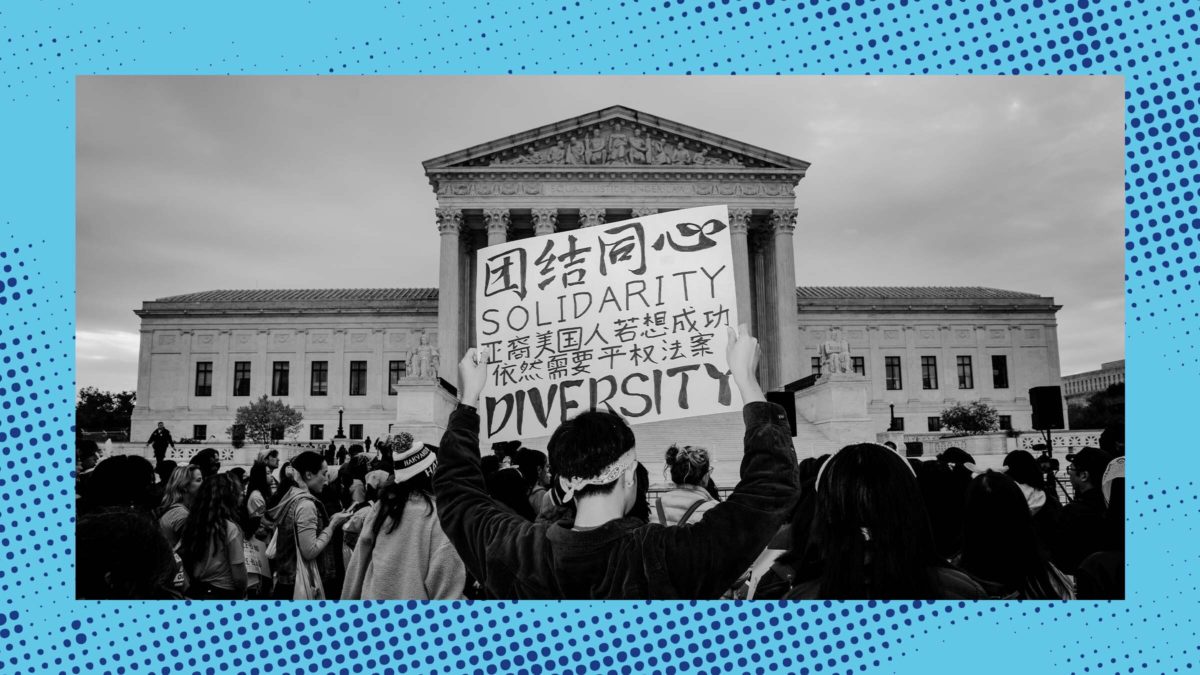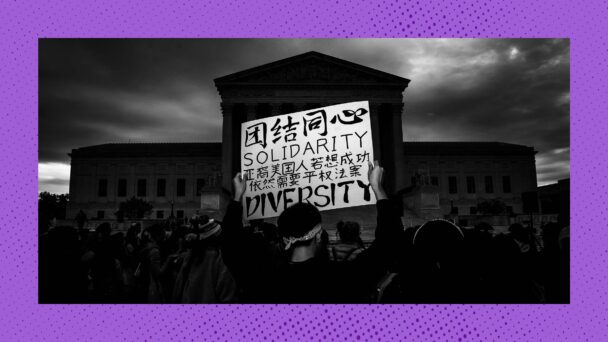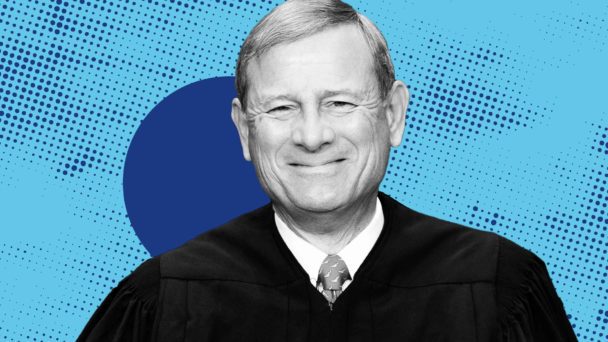Law school admissions might be getting a serious makeover. Last month, the influential U.S. News World and Report rankings took a major credibility blow when six top law schools, including #1 Yale and #2 Stanford, opted out of sending the company data for their inclusion on the list. Other top schools have since followed suit.
For years, college and university administrators have criticized the rankings for weighting attributes that bear little relation to educational quality. But forgoing the list altogether, particularly when so many students use it to decide which schools to apply to, is a radical shift. The move is happening parallel to the Supreme Court potentially striking down race-conscious affirmative action programs, which colleges and universities have used since the late 1960s to admit underrepresented students.
If law schools aren’t allowed to formally consider race in the admissions process, then they may have to change their acceptance criteria to maintain diverse student bodies. The Law School Admissions Test (LSAT), for example, has been one of the major factors that administrators use to evaluate applications. It’s also been a controversial metric. The test has produced racially-skewed results, according to the Law School Admissions Council, with white and Asian-American test takers scoring higher on average than Black and Latinx test takers, which may be a result of reinforcing societal inequalities. LSAT prep classes are expensive ($1,300 on average), and tutors recommend that applicants study for the test full-time for many months, meaning students who don’t need to work to support themselves have a major leg up. That’s part of why only 5 percent of students at top law schools come from families in the bottom half of the socioeconomic spectrum.
The dean of Yale Law School, Heather Gerkin, explained that the school’s decision to withdraw from the rankings was partially motivated by its emphasis on the LSAT, which “imposes tremendous pressure on schools to overlook promising students, especially those who cannot afford expensive test preparation courses.” (The American Bar Association also voted to eliminate it as an admissions requirement starting in 2025.) Gerkin also pointed to the fact that the rankings disincentivize “programs that support public interest careers, champion need-based aid, and welcome working-class students into the profession” as a major flaw of the list.
As law schools and the legal profession revamp admissions criteria, the question remains: Can any metric be “race-neutral?” If not, which standards should institutions of higher education employ to ensure racially equitable access? And to what end? To learn more about the history of affirmative action programs and how they might inform the future of law school admissions, we spoke with Kevin Brown, a professor emeritus at the Maurer School of Law at Indiana University. The conversation has been edited and condensed for clarity.

Harvard Law School (Photo by Brooks Kraft LLC/Corbis via Getty Images)
Balls & Strikes: What are the justifications that the Supreme Court has given for race-conscious affirmative action programs?
Kevin Brown: Frankly, there’s only one: the benefits of diversity in public education. It’s the idea that multiple perspectives improve the learning environment for everyone.
What about the discussion of the need for communities of color to have doctors and lawyers of color serve them in Regents of the University of California v. Allan Bakke? Did the Court ever adopt that as a justification for affirmative action programs?
No. Justice [Lewis] Powell authored the dominant opinion in Bakke in 1978 which set the structure for affirmative action. He rejected that notion. The Court was dealing with a medical school that said, “Sixteen percent of the American population are students of color. Why don’t we reserve 16 percent of our spots in our medical school for them? But we don’t want to reduce the opportunity for white kids to go to this school, so we’ll just add 16 spots.”
The question that came before the Supreme Court was, “Could the medical school reserve spots for students of color that correspond to the overall proportion of people of color in society?” Four justices interpreted Title VI of the 1964 Civil Rights Act to say schools can’t consider race at all. Their position was, “No quotas and no consideration of race as a factor in admissions.” Four other justices said, “We think quotas are fine,” and found that to be the case under both the Constitution and under Title VI.
Justice Powell rejected social justice rationales for affirmative action. He explicitly rejected the notion that we need minority doctors for minority communities as a rationale for taking account of race in the admissions process. He also rejected the argument that the history of discrimination against people of color, particularly African-American people, needs to be remedied through affirmative action programs.
Instead, the only rationale that he accepted was the fact that under the Constitution, colleges and universities have an independent First Amendment academic freedom right that allows them to determine the makeup of their student body. But that right has to be balanced against the equal protection rights of all people. He said quotas were unconstitutional, but schools could consider race as a factor.
When did diversity become the main justification for affirmative action programs?
Diversity has been the rationale for affirmative action since the Grutter v. Bollinger case in 2003. What the Court holds in Grutter is that, as part of looking for a diverse student body, it is acceptable to look for a critical mass of underrepresented minorities with a history of discrimination. This means that when a school is considering an applicant’s race, they need to be underrepresented minorities with a history of discrimination.
Isn’t that in tension with the Court’s rejection of a social justice or remedial rationale for affirmative action programs in Bakke?
I agree there is tension between the Court’s adoption of the diversity rationale and its rejection of the social justice rationales. The diversity rationale does state that schools can consider race for groups that are underrepresented because of our history of discrimination.
What we are dealing with here, ultimately, is the meaning of the Equal Protection Clause of the Fourteenth Amendment. The Fourteenth Amendment and the Equal Protection Clause were partially a payoff to Black people at the end of the Civil War for saving the Union. Ten percent of the Union war dead were Black troops and 85 percent of eligible Black males in the North fought for the Union. Hence, the reinterpretation of the Fourteenth Amendment to eliminate the ability of the descendants of those Black people to go to selective higher education institutions can’t be read as anything other than a huge betrayal.
What the Supreme Court says about the Equal Protection Clause in its first opinion on it in 1873 is: “We cannot imagine any other group than the Negro race ever raising a challenge under this provision because it is so much a provision for this group. A very strong case would be made to apply to any others.” Now, that is the phrase in the Fourteenth Amendment that people are using to strike out affirmative action.

The Court that decided Bakke poses with President Jimmy Carter at the White House, September 1977. Justice Lewis Powell is at fourth from right.
How did that happen?
What happened goes back to Justice Powell’s opinion in Bakke because he had to deal with the notion that the original meaning and purpose of the Fourteenth Amendment was to protect the rights of the freedmen. He said, “Look, our Supreme Court back in the 1870s, 1880s, and 1890s strangled these Reconstruction Amendments. Now, America is a nation of minorities, and it is simply too late to go back to that original meaning. Therefore, we’re going to read this amendment as meaning that the Equal Protection Clause is there to protect the rights of individuals.” When you move the purpose of the clause from protecting disadvantaged minorities to protecting individuals, then governmental action that helps disadvantaged minorities is no different than governmental action that segregates them.
Could you explain how City of Richmond v. Croson fits into this?
City of Richmond v. Croson is a 1989 case. What the Supreme Court said there was that a law that set aside a certain percentage of city contracts for nonwhite contractors, passed by the City of Richmond—the capital of the Old Confederacy, a place with a contentious school desegregation battle for many years, a place where discrimination is sort of written into the fabric of the city—was discriminatory. The Court used strict scrutiny to do it. That decision is the one that enshrined Justice Powell’s notion of protecting individuals instead of disadvantaged groups into the Constitution, because that decision had five justices who signed on to it.
In Croson, the justices struck down an anti-racist policy. They treated it with the same scrutiny that they employed when analyzing racist policies like Jim Crow segregation. Is that conflation—treating anti-racist and discriminatory policies the same way—part of the problem with Croson?
You’re exactly right. The other problem there is that the Court said in an earlier opinion, “Though we recognize the history of discrimination in our society, we the Court are not going to order remedies for that. We’re going to leave it to the political process.” And in Croson, the Court says, “We’re not going to let the political process do it, either.” If the courts won’t remedy the current effects of our past history with discrimination and the local political process can’t do it either, then you are frozen into place with those disparities for a very long time.
How does Brown v. Board of Education fit into this?
I was born in 1956. I’m one of those kids who went through the desegregation process. Striking down segregation was a tremendous benefit for people of color. However, you have to remember that the men who wrote that opinion were all born in the 1800s and could not escape the racism of their time. When it came to the question: “What is wrong with segregation from a Constitutional standpoint?”, the Court said, “Segregation, with the sanction of law, has a tendency to retard the mental development of Negro children in ways unlikely ever to be undone.” The desegregation efforts took on this notion that we are desegregating American society by a massive social welfare program where we’re asking white people to donate to Black people through interracial contact.
What critical race theorists argue is that there is another way to think about the problem with segregation and it’s not that Black people are inferior. It is that Black people are oppressed. When you say the core issue is oppression, you change the dynamics. The problem now no longer lies with Black people, it’s with the oppressors, the white people, and what needs to be dismantled are the structures of oppression. What Brown did was give us the illusion that we really battled the problem of white supremacy, when in fact, we reinforced it.

Monroe Elementary School in Topeka, Kansas, one of four segregated elementary schools for Black children in Topeka at issue in Brown v. Board (Photo by Mark Reinstein/Corbis via Getty Images)
You’ve argued that the reliance on standardized tests in higher education admissions to gauge academic merit has caused the same problem that the justices identified in Brown v. Board regarding segregation. Could you break that down?
Segregation was built on this notion that Black people were mentally inferior. That’s exactly what we’re pumping out to our society when discussing achievement gaps on standardized tests—that the tests are pointing to the mental inability of Black people. In that way, these discussions are sending the same messages to our society as segregation did.
Then, they also become the primary justification for why Black people don’t have as much. “You’re not as smart. You don’t work as hard at this. You don’t take education seriously.” The standardized tests function as rationales for the racial socioeconomic disparities that are so ubiquitous in our society.
Is it possible to create race-neutral standards for admissions, like Students for Fair Admissions, the organization challenging affirmative action, are arguing for?
Quite frankly, I don’t think you can do it. The legal system systematically underappreciates the perspective of people of color, but especially Black people. It rejects our perspective. Now, if you’re going to create a test to see how well people will do in law school, you’re going to base it on the kind of thinking that is done in law schools. That means the test will then capture the bias of American law and legal education. If you wanted to come up with a test where you did not have these racial disparities, then the test simply wouldn’t be a test of how you prepare people for law school, or predictive of how well they’ll do in law school.
If it’s not possible to create race-neutral metrics, should schools revisit the goal of admitting a student body that reflects the racial makeup of society?
I’m with you 1,000 percent. But you’d have to have a different Supreme Court than the one right now—one that cares about the rights of underrepresented minorities and poor people. The Bakke decision meant you can let in Black people, but their proportion of the class overall can’t be proportional to their numbers in society. The way affirmative action plays itself out from 1978 forward is that Black people are maybe about 10 to 12 percent of the population, but around 6 percent of those enrolled in selective higher education programs. Now, if you strike affirmative action as it exists now, that 4 to 6 percent is likely to drop to 2 to 3 percent. We already have a compromise in place. But still, people are complaining that disadvantaged minorities aren’t disadvantaged enough in the admissions process.
I’m not optimistic that this Court is going to uphold affirmative action. But there were statements by some of the justices that gave me a ray of hope. Justice Neil Gorsuch said, “Maybe we shouldn’t strike affirmative action down under the Constitution, but under Title VI.” Now, if they strike it down under Title VI, then that means Congress can amend it or pass a new law that works around whatever the Supreme Court decision is. But to put it in the words of Justice [Ruth Bader] Ginsburg, I won’t firmly forecast what the future will hold.
An earlier version of this post misstated the year of the Croson decision. The Court decided it in 1989, not 1999.




